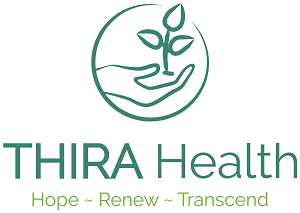
Photo:
Credit: Eвгения Kарпова/Pexels
Editor’s note: This article was sponsored by THIRA Health.
Spring is a season of reawakening. Flowers are blooming, birds are singing, baby animals are being born, and the days are becoming longer (and warmer). That surplus of sun serves as a mood booster for many, but the arrival of spring comes with a surprising downside, too: an increased rate of deaths by suicide.
In fact, 2019–2020 data from the Centers for Disease Control and Prevention indicates that suicide rates peaked in the spring and summer months, a trend that’s been consistent for the past 16 years. Yet a majority of people worry most about suicide risk in the winter months, says Sarah Skoterro, LPCC, LADAC, business development director and former clinical director at THIRA Health. And although September is suicide prevention month, April is actually when suicide risk is the highest, she says. Here’s what you need to know to make sure your loved ones are okay.
Why do suicide rates spike in the spring?
In her 30 years of clinical experience, Skoterro has heard many firsthand accounts of how challenging spring can be. “Patients tell me, ‘I just cannot bear the springtime. I don’t have energy. I should be feeling better — everybody else is feeling better. But I just can’t face it,’” she says.
But why is spring, a time of pleasant temperatures, extra vitamin D and abundant fresh air, so hard for so many? Several factors are thought to contribute to increased suicide risk in the spring, says Skoterro. These include:
- Allergies
According to the Asthma and Allergy Foundation of America, as many as 50 million Americans suffer from indoor and outdoor allergies each year. In the spring, people with seasonal allergies are feeling miserable, says Skoterro. If they’re also suffering from depression or a mood disorder, allergies become an exacerbating factor; research suggests a correlation between seasonal allergies and suicide, she says.
- Inflammation
Inflammation seems to compound mood disorders, Skoterro notes. “Anything that increases inflammation seems to be associated with depression and suicidal thinking,” she says. It’s thought that the body’s inflammatory response to allergens and other triggers heightens anxiety, decreases socialization and increases aggressive behavior — all recognized warning signs of heightened suicide risk.
- Mood disorders
Springtime can easily lead to problematic behaviors and hospitalizations for people with bipolar disorder, Skoterro says. More light exposure causes a spike in serotonin and dopamine, increasing the risk of mania. “It’s more likely that somebody with bipolar disorder is going to go do something erratic — they need to be really careful, because the extra daylight and the excitement of spring can rev them up,” she says. Skoterro advises that it’s important to be consistent with any medication people with this disorder are taking to manage it.
Even aside from these risk factors, it’s important to check in to see how your family is coping, says Skoterro.
Make sure your teens are okay
It’s important for parents to speak candidly with their teenagers about what’s going on in their lives, says Skoterro. In particular, second-semester high school seniors may be at amplified risk of suicide. That’s because they’re about to venture out into the world on their own, leaving the safe and predictable cocoon of home, she says.
“Ask them with transparency, ‘How are you feeling? Do you ever feel like it’s going to be too hard to get through your senior year?’ The life that they’ve been used to and had mastery over is coming to an end, and the great big old world is waiting for them. It’s super stressful,” says Skoterro.
“I’ve seen a lot of kids go to treatment during their last semester of high school, because they didn’t feel ready. The anxiety and the depression became overwhelming, and of course that impacted their ability to perform academically,” says Skoterro.
Suicide risk factors to watch for in teens
Instead of getting carried away with their own enthusiasm about spring, parents should pay close attention to how their kids are behaving. For instance, there might be a noticeable decrease in overall motivation, Skoterro says. Teens may withdraw from family interaction, experience sleep disturbances, spend more time in front of screens, or their group of friends may change.
“Any swift changes to our emotional resources make us vulnerable, and that’s a big issue for kids who are getting ready to go to college. They may break up with their high school sweetheart or lose interest in their hobbies — those are huge red flags that parents should be paying attention to,” says Skoterro.
Asking yourself these questions about your child can help you to spot potential risk factors:
- Have their grades dropped?
- Has their group of friends changed?
- Are they isolating more?
- Are their sleep habits healthy?
- Is their energy level normal?
- Has anything changed within your family (e.g., a divorce or separation)?
- Have they started using drugs or alcohol?
- Are they still engaged in the activities they enjoy?
How to talk about suicide risk
Don’t just assume your kids are okay, says Skoterro. “The conversation you’re probably most afraid to have is the conversation you most need to have. What kids express to therapists so often is ‘Nobody in my family ever asked me’ and ‘I wish my parents had noticed.’ Above all, it’s important to really sit down with your kids and say, ‘You know what? Everybody’s excited about spring, but I’m wondering how you’re doing.’”
Don’t brush off even slightly concerning statements. If your teen makes comments such as “I just can’t take this anymore,” “Sometimes I feel like it would be better if I didn’t exist” or “I just don’t feel hopeful anymore,” it’s time to take immediate action, Skoterro says. “Stop what you’re doing and come together as a family. Seek professional help if necessary.”
Families should have a weekly meeting to talk about each member’s high point and low point of the week. And parents shouldn’t be afraid to call out their kid if they know what they’re saying isn’t true, says Skoterro. Kids need to know you’ve noticed when they’re struggling: Ask what they need help with and check in regularly to see how things are progressing.
“Kids need to feel seen. Normalize getting up in their business a little bit. If a parent can show that they can talk about suicide normally and rationally even though they’re scared, teens know that it’s not a taboo topic,” says Skoterro.
COVID-19 has heaped an enormous amount of stress on all humans, and therapists across the country are seeing a tsunami effect on mental health. “This is already a heightened time of depression and anxiety that could potentially contribute to suicide,” says Skoterro.
Springtime isn’t always a great time for everybody, so be especially aware of how your loved ones are doing. All you have to do is ask.
|
Sponsored by: |

|











